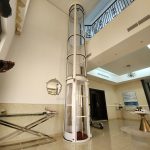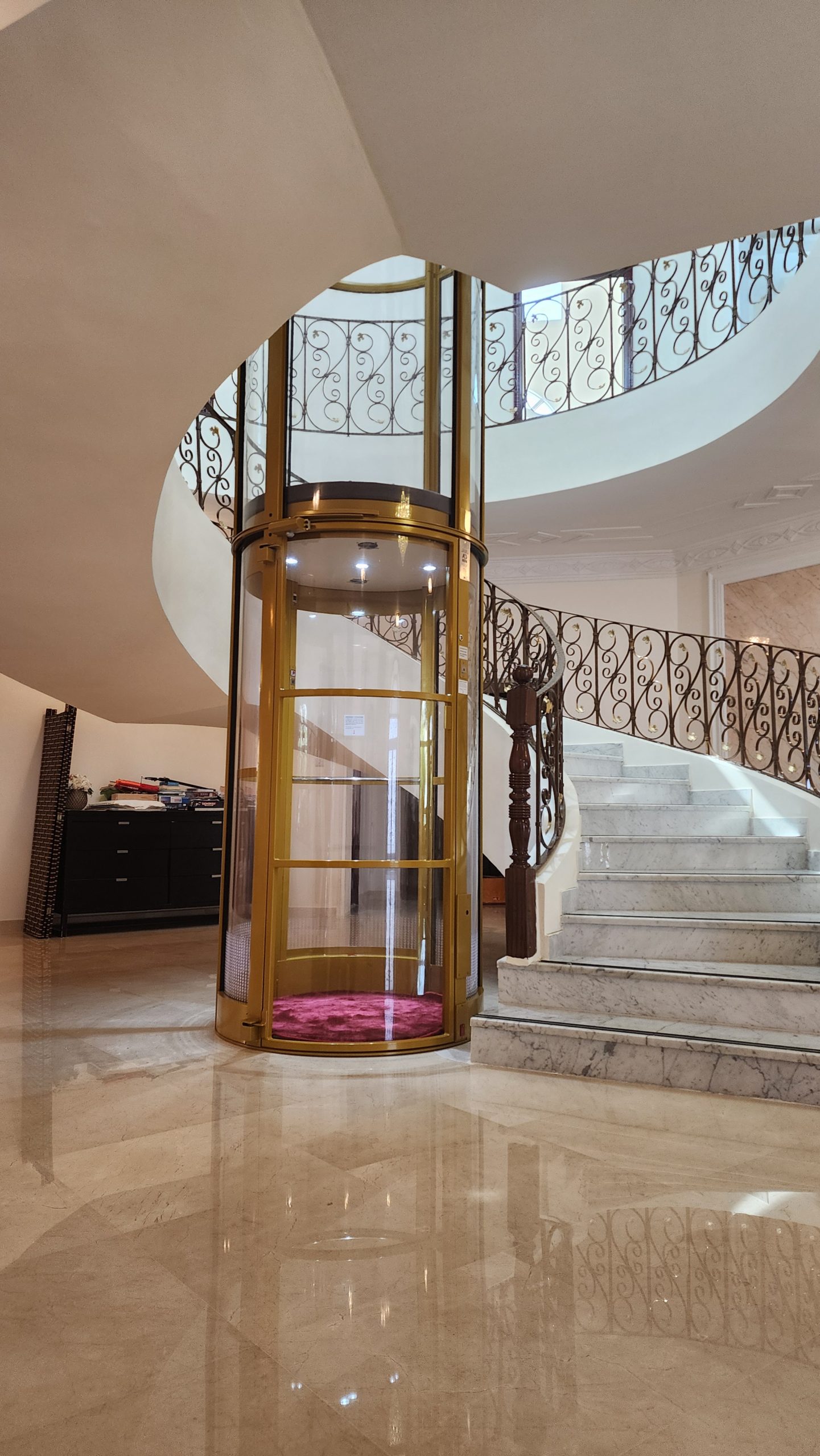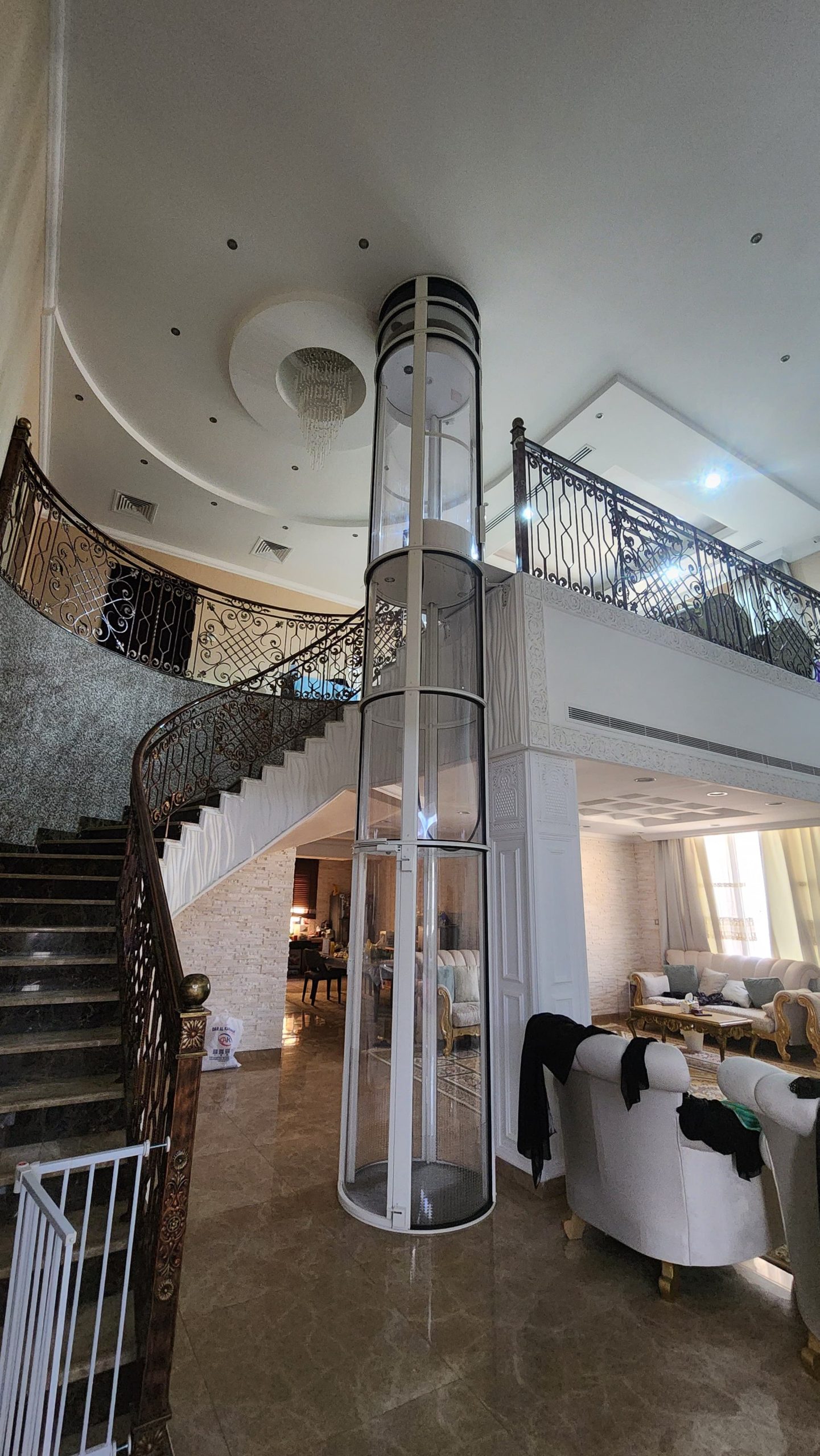TOLEDO Elevators and Moving Systems in UAE(Abu Dhabi, Dubai).
- Home
- Vacuum Elevator
Vacuum Elevator
Vacuum Elevator
The Vacuum Elevator merges a smooth vertical cylinder with a coaxial car that moves up and down through air suction.
Space-Saving
Compact design for any home
Self-Supporting
No shaft, pit, or machine room required
Eco-Friendly
No harmful oils or lubricants needed
Less Maintenance
Requires servicing only after 15,000 lifts
Plug & Play
Operates on a standard 220V power supply
Safe & Reliable
Advanced braking and safety mechanisms
Benefits of vacuum elevator
Space-Saving
These home elevators occupy less space as compared to traditional elevators. It offers more flexibility for retro-fit and new construction projects.
Self-Supporting
They are fully enclosed elevator which simply rests on the prevailing ground floor. Hence there is no need of a shaft, pit or machine room
Eco-Friendly
Cleanest technology on the market. Unlike other drive systems, harmful oils, gases or lubricants are not required.
Less Maintenance
Per PVE® certification, the primary care for a PVE® Elevator is after 15,000 lifts or roughly 5 years.
Plug & Play
220 Volt, single phase power supply. They are energy efficient residential elevators that plug into your wall.
Safe & Reliable
If ever you progress, you'll call the authorized dealer who installed the unit, disassemble the elevator and reinstall it in another home.
Components used for vacuum elevators:
Exterior cylinder
The cylinder may be a transparent tube built around an aluminum steel structure. The wall of the tubes is formed of polycarbonate sheets. The tube comprises a modular section, which easily can fit into each other. The steel is employed to form the roof of the tube, which ensures airtight closings with suction valves and inlets.
Elevator car
The car moves through the rail. The rail is supported by the cylinder. The walls round the car are made from polycarbonate panels. An anchoring system is installed within the cars that activate on reaching the required floors and may provide precise and smooth stops. It consists of a system to lock the car.
Suction assembly
The suction assembly or head unit is found at the top of the tube where turbines, valves, and other controls are located. The control cabinet may be a metal box housing with a pneumatic controller board and other electrical devices. The top unit is placed on an equivalent tube that holds the car or installed separately as a split unit at a distance of up to 10 meters from the lift. The frame of the suction assembly is usually made from fiberglass. The fabrication of elevator parts, construction, and testing and commissioning of the elevators should be done by well-trained elevator technicians.






How do vacuum elevators work?
The piston gear surrounded by a sliding air tight seal allows an almost frictionless movement and hoists the car because of the pneumatic depression generated on the upper part
A valve regulating inflow of air controls the pneumatic depression, enables descent and controls the speed of the car
The lower part of the shaft is open to ensure free entrance of air at air pressure
At each floor or level, perimeter seals on the door are self-sealing because of the action of the air pressure
The car has locking devices to prevent at the upper and lower limits of travel.
A safe braking device (chute) activates just in case of free fall.
Share to Social Media Now!
Elevate Your Voice and Expand Your Reach by Sharing Engaging Content Across Diverse Social Media Networks, Igniting Connections Worldwide!






